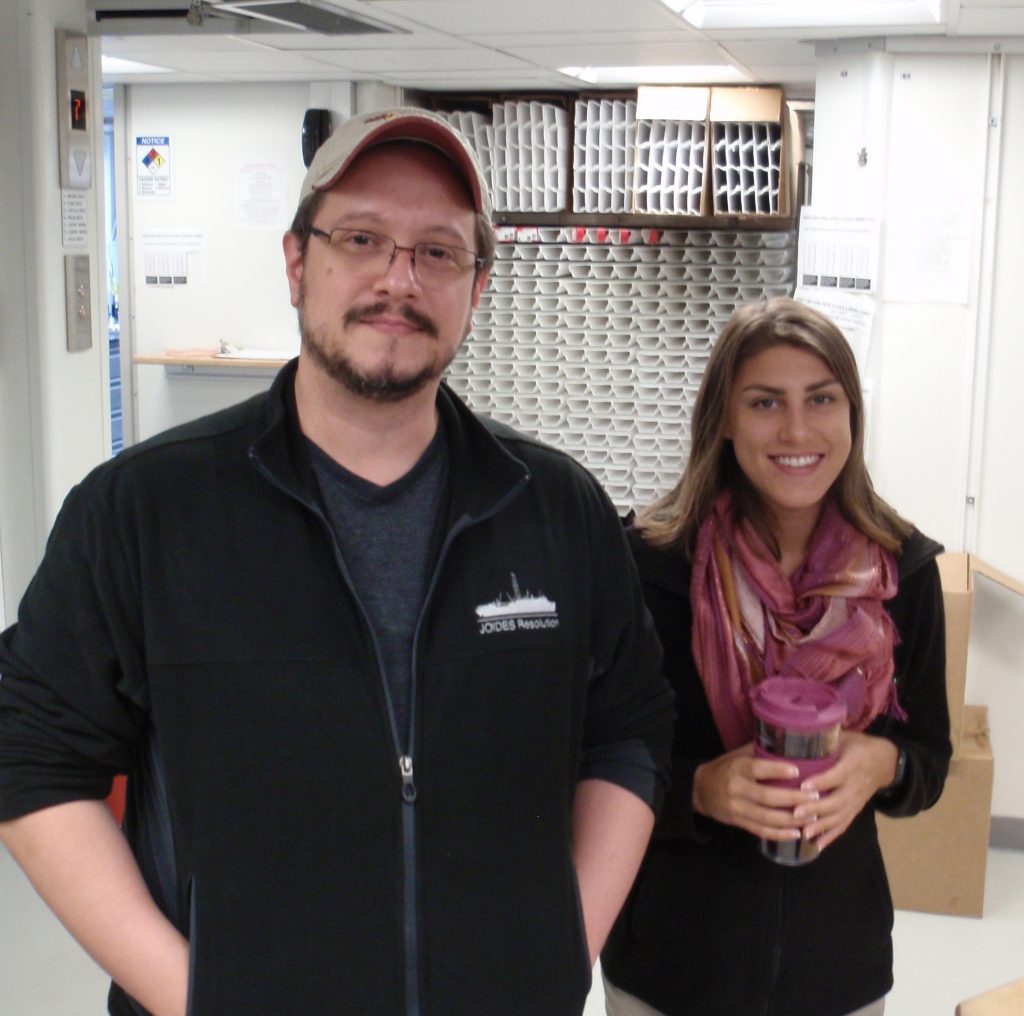
Excitement in the Magnetic Field
Meet the expedition’s palaeomagnetists, Millie and Daniel. They’re looking pretty positive, but they have had a VERY slow expedition so far.
Their job is to take samples of the core, and study their natural magnetization. Some sediments contain magnetic minerals, which record the state of the Earth’s magnetic field at the time they’re buried. Since the Earth’s magnetic field naturally varies in intensity and even orientation over time, by matching the sample’s field against the Earth’s magnetic field records, palaeomagnetists (or p-mags) can find out how old the sample is!
They accomplish this using a set of awfully impressive and mysterious cylindrical steel devices, which they repeatedly assure me CANNOT create superpowers in humans.
But when the expedition is just recovering partial cores of jumbled sediment (at best), Millie and Daniel don’t have much to work with. There’s no way of telling how the sediment was originally oriented, or which particles came from which section of the core, so while they can tell us the rough magnetic qualities of a random clump of sediment, they need more information to find out an age.
Until now! Core 2X of our second site has finally yielded a chunk of carbonate big enough to not flip upside down in the tube!
That means that we have a solid sample of sediment with its original orientation. This is exciting stuff, and it means that after almost a week on board, our P-mags finally have something useful to work with. After cutting out a little cube from the core, they’ve managed to get some VERY interesting readings, (“These could have come from a textbook” says Daniel) and have a few theories on some of the particles it may contain.

But to make sure, there’s a few more tests they need to run.
- First, by running the cube through Isothermal Remanent Magnetization, they can see how easily the material is remagnetised.
- Secondly, by running the cube through the X-ray diffraction process, they can test how the materials scatter photons.
Both of these tests combined will give us a very good idea of what the mysteriously magnetic cube is made of.
BUT… the tests interfere with each other’s results.
To run both tests, we need a second cube. And the second cube is currently soaking in a saltwater bath in a vacuum chamber in the physical properties lab. Michelle in phys-props is happy to let the P-mags borrow half the cube when she’s done with it. But that means they’ll have to wait 24 hours for it to soak, and then 24 hours for it to dry again.
Well, it’s been waiting a million or so years.
What’s a few more days?
